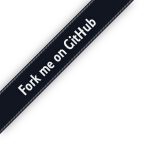学习 Browser Use 的工具使用
我们已经学习了 Browser Use 的 “任务规划” 和 “记忆管理”,通过剖析相关代码,相信大家对 Browser Use 的实现原理已经有了基本认识。今天我们将关注智能体三大核心组件中的 “工具使用”,学习 Browser Use 是如何使用工具的。
正如 Browser Use 的名字所示,它最重要的工具就是浏览器,通过各种浏览器操作,例如导航、滚动、点击、输入文本等,实现网页任务自动化和智能化;除此之外,Browser Use 也支持用户自定义工具,例如保存文件、访问数据库、发送通知、接收人类输入等,实现更丰富的智能体功能。
AgentOutput 模式
通过前面的学习,我们知道 Browser Use 通过 消息管理器 将系统提示词、用户任务、历史操作记录、当前浏览器状态以及上一步动作的执行结果等信息,组装成大模型的输入参数。调用大模型后,得到结构化的结果,类似于下面这个样子:
{
"current_state": {
"evaluation_previous_goal": "we did ok, team",
"memory": "filled in xyz into page, still need to do xyz...",
"next_goal": "click on the link at index 127, then open that new tab"
},
"action": [
{ "click_element_by_index": { "index": 127 } },
{ "switch_to_tab": { "page_id": 3 } }
]
}这个结构化的结果就是 AgentOutput 模式,定义如下:
class AgentOutput(BaseModel):
model_config = ConfigDict(arbitrary_types_allowed=True)
current_state: AgentBrain
action: list[ActionModel] = Field(
...,
description='List of actions to execute',
json_schema_extra={'min_items': 1}, # Ensure at least one action is provided
)很明显,这是一个 Pydantic 模式。
很多地方把 Pydantic 的 Model 翻译成 “模型”,但是为避免和大模型混淆,我统一翻译成 “模式”。
其中第一行的 model_config 是模式配置,arbitrary_types_allowed=True 表示模式中可以包含任意类型的字段,比如自定义类、第三方库的对象等。如果不设置为 True,Pydantic 默认只允许标准类型和已注册的类型。
下面的 current_state 和 action 是 AgentOutput 模式的两个字段,current_state 对应 AgentBrain 模式:
class AgentBrain(BaseModel):
evaluation_previous_goal: str
memory: str
next_goal: str表示当前的状态信息,以及前一个目标的回顾和下一个目标的展望。action 对应 ActionModel 模式:
class ActionModel(BaseModel):
model_config = ConfigDict(arbitrary_types_allowed=True)表示下一步要执行的动作,这是一个动态模式,因为每个动作的名称和参数都是不一样的。
值得一提的是,参数 action 后面的 Field(...) 是 Pydantic 的特殊语法,这个不是省略的意思,而是表示该参数是必填的。不仅必填,后面的 {'min_items': 1} 还规定该列表至少包含一项。
Pydantic 模式和结构化输出
在大多数场景下,大模型都是直接用自然语言回应用户的,但是有一些特殊场景,我们需要模型以结构化格式输出,比如我们希望将模型输出存储在数据库中,并确保输出符合数据库模式。这就是 结构化输出(Structured outputs) 功能:

结构化输出有两个要点:
- 模式定义:指示模型输出格式
- 结构化输出:模型返回符合该模式的输出
关于第一点,我们可以直接以 JSON 方式定义,或者使用 JSON Schema 方式定义,但是更常见的做法是使用 Pydantic 库,Pydantic 是一个现代的 Python 数据验证库,使用 Python 类型提示来定义数据模式并自动进行数据验证、序列化和文档生成。
Pydantic 特别适合定义结构化输出模式,下面是一个示例,通过继承 BaseModel 类定义了两个数据模式:
from pydantic import BaseModel, Field
class Student(BaseModel):
name: str = Field(description="学生姓名")
age: int = Field(description="学生年龄")
gender: str = Field(description="学生性别")
grade: int = Field(description="学生年级")
school: str = Field(description="学生学校")
class StudentList(BaseModel):
students: list[Student] = Field(description="学生列表")关于第二点,目前有很多大模型都支持结构化输出的功能,不同的模型实现方式可能也不同,比如 Function calling、Tool calling、JSON 模式 等等。LangChain 提供了一个 with_structured_output() 方法,可以自动将模式绑定到模型并解析输出,用来起非常方便:
from langchain_openai import ChatOpenAI
llm = ChatOpenAI(model="gpt-4o-mini", temperature=0)
llm_with_structure = llm.with_structured_output(StudentList)
structured_output = llm_with_structure.invoke("随机生成5条学生信息")
print(structured_output)输出结果如下:
students=[
Student(name='张伟', age=15, gender='男', grade=10, school='北京中学'),
Student(name='李娜', age=14, gender='女', grade=9, school='上海外国语学校'),
Student(name='王磊', age=16, gender='男', grade=11, school='广州实验中学'),
Student(name='刘婷', age=13, gender='女', grade=8, school='深圳科技中学'),
Student(name='陈强', age=17, gender='男', grade=12, school='杭州高级中学')
]浏览器动作
通过上面的学习,我们明白了 Browser Use 是通过结合 AgentOutput 模式定义和大模型的结构化输出功能,从而得到下一步的动作。
但是,仔细想想就会发现一个问题,这里我们在调用大模型的时候,工具列表中始终只有一个 AgentOutput 工具,这和传统的工具调用很不一样,之前的做法是将所有的工具列出来,让大模型来判断下一步应该使用哪个。感兴趣的朋友可以将调用大模型的入参打印出来确认一下:
[
{
"type": "function",
"function": {
"name": "AgentOutput",
"description": "AgentOutput model with custom actions",
"parameters": {
"properties": {
"current_state": {
"description": "Current internal working memory of the agent, we ask the LLM to decide new values for these on each output",
"properties": {
"evaluation_previous_goal": {
"type": "string"
},
"memory": {
"type": "string"
},
"next_goal": {
"type": "string"
}
},
"required": [
"evaluation_previous_goal",
"memory",
"next_goal"
],
"type": "object"
},
"action": {
"description": "List of actions to execute",
"items": {},
"min_items": 1,
"type": "array"
}
},
"required": [
"current_state",
"action"
],
"type": "object"
}
}
}
]可以看到,这里就一个 function。那么,大模型是如何选择下一步动作的呢?其实,这里的关键就在于前面 Browser Use 定义的 ActionModel 这个模式,这是一个动态模式,在 Agent 初始函数中有一个 _setup_action_models() 方法,它的作用是将所有可用的工具注入到这个模式中:
def _setup_action_models(self) -> None:
"""Setup dynamic action models from controller's registry"""
# Initially only include actions with no filters
self.ActionModel = self.controller.registry.create_action_model()
# Create output model with the dynamic actions
self.AgentOutput = AgentOutput.type_with_custom_actions(self.ActionModel)这里的 controller.registry 是 Browser Use 工具调用的核心,所有内置的浏览器工具都注册在它的 registry.actions 数组里。这里通过它的 create_action_model() 方法动态地创建一个 ActionModel 模式,将所有可用的工具绑定到 ActionModel 模式中:
def create_action_model(self) -> type[ActionModel]:
available_actions = {}
for name, action in self.registry.actions.items():
available_actions[name] = action
fields = {
name: (
Optional[action.param_model],
Field(default=None, description=action.description),
)
for name, action in available_actions.items()
}
return create_model('ActionModel', __base__=ActionModel, **fields)这里我省略了一些代码:
- 域名过滤:通过
domains参数限定工具仅在某些域名下可用; - 页面过滤:通过
page_filter函数判断工具是否在当前页面可用;
注入所有工具后,调用大模型的入参类似于下面这样:
[
{
"type": "function",
"function": {
"name": "AgentOutput",
"description": "AgentOutput model with custom actions",
"parameters": {
"properties": {
"current_state": {...},
"action": {
"description": "List of actions to execute",
"items": {
"properties": {
"search_google": {
"anyOf": [
{
"properties": {
"query": {
"title": "Query",
"type": "string"
}
},
"required": [
"query"
],
"title": "SearchGoogleAction",
"type": "object"
},
{
"type": "null"
}
],
"default": null,
"description": "Search the query in Google, the query should be a search query like humans search in Google, concrete and not vague or super long."
},
"go_to_url": {
"anyOf": [
{
"properties": {
"url": {
"title": "Url",
"type": "string"
}
},
"required": [
"url"
],
"title": "GoToUrlAction",
"type": "object"
},
{
"type": "null"
}
],
"default": null,
"description": "Navigate to URL in the current tab"
},
...
},
"type": "object"
},
"min_items": 1,
"type": "array"
}
},
"required": [
"current_state",
"action"
],
"type": "object"
}
}
}
]这里的 action 参数的类型为 array 数组,数组中的每一项类型为 object 对象,对应不同的工具,每个工具的参数都是动态的。Browser Use 的工具调用虽然只有一个 AgentOutput,但是通过动态的 ActionModel 实现了不同工具的选择,让大模型输出下一步要执行的动作。
小结
今天我们探讨了 Browser Use 如何利用大模型的结构化输出能力简化了工具调用的过程,结合 AgentOutput 模式定义与动态的 ActionModel,实现智能体在执行网页任务时灵活选择和使用不同工具。
接下来的学习中,我们将深入探讨浏览器操作的具体实现以及如何自定义工具,以扩展 Browser Use 的功能。敬请期待下一篇的内容!

